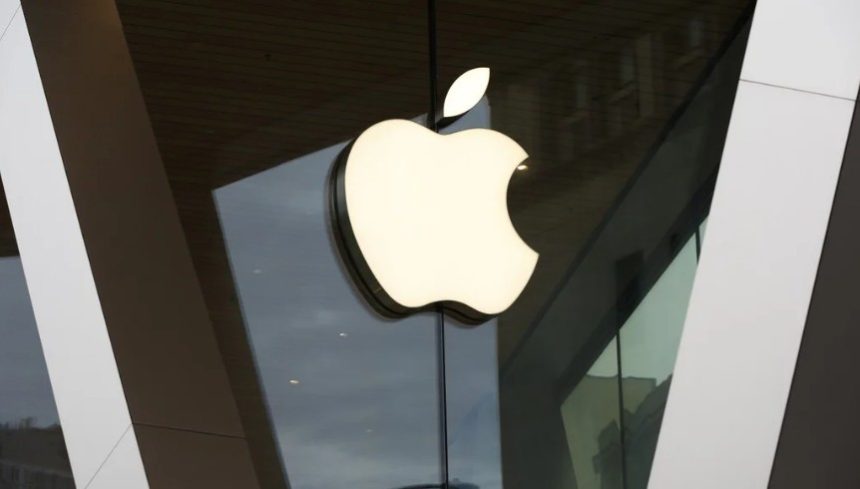Apple Pledges $100 Billion to U.S. Manufacturing Ahead of Trump Appearance
In a significant political and economic move, Apple Inc. has announced a fresh $100 billion commitment to American manufacturing, just ahead of a high-profile event with President Donald Trump.
This announcement adds fuel to Apple’s ongoing efforts to bring more of its operations back to U.S. soil, particularly as trade tensions and tariff threats loom.
This isn’t a random show of patriotism. It’s a strategy. It’s survival. The tech giant’s expanded investment falls under its American Manufacturing Program (AMP), which aims to strengthen domestic production capacity, especially in high-tech components.
Major players such as Corning Inc., Applied Materials, and Texas Instruments are all involved in this growing ecosystem.
Corning, in particular, is going all in. The glassmaker is set to dedicate an entire Kentucky facility solely to Apple, a move that will swell its local workforce by 50%.
It’s not the company’s first collaboration with Apple, it made the original iPhone glass at the same site. But this time, the scale is on another level.
According to a senior White House source, Apple’s latest push is designed to bring critical components back home. A full reshoring? Not quite. But a serious step.
“President Trump’s America First economic agenda has secured trillions of dollars in investments that support American jobs and bolster American businesses,” said White House spokesperson Taylor Rogers.
“Today’s announcement with Apple is another win for our manufacturing industry that will simultaneously help reshore the production of critical components to protect America’s economic and national security.”
This announcement elevates Apple’s cumulative US investment to a jaw-dropping $600 billion, up from the previously pledged $500 billion.
That earlier figure had already covered projects like a new server manufacturing facility in Houston and a supplier training centre in Michigan.
The news also comes as Apple battles the consequences of U.S.-India trade tensions. Trump has just imposed an additional 25% tariff on Indian imports, specifically as retaliation for India’s purchases of Russian oil.
Apple, which assembles most of its iPhones in India, finds itself caught in the crossfire.
According to Bloomberg analysts Anurag Rana and Andrew Girard, Apple’s hefty new pledge might help “soften the White House’s ire.”
They anticipate Apple will prioritise “higher-end products, artificial intelligence labs and semiconductor engineering in the US, rather than mass-produced lower-end phones and accessories.”
And that’s not all. Trump has hinted at extending tariffs to all semiconductor-based products, a sector Apple cannot afford to ignore. The president’s broader agenda also includes an extensive list of country-specific duties set to activate imminently.
In recent months, Apple’s been bleeding under the weight of trade taxes. The June quarter alone saw the company take an $800 million hit. With no policy changes in sight, the September quarter might stack another $1.1 billion in tariff-related costs.
CEO Tim Cook hasn’t shied away from the realities of Apple’s global supply chain. “The vast majority of iPhones sold in the US come from India,” Cook told analysts. “And ultimately, we will do more in the United States.”
Doing more in the U.S., however, is easier said than done. Apple’s international assembly network—particularly in China and India—relies on massive labour forces and finely-tuned supply chains. Recreating that from scratch in the U.S. is no small feat.
Instead of overhauling production entirely, Cook appears focused on securing exemptions from the incoming wave of tariffs—something Apple previously managed during Trump’s first term. Whether he’ll succeed this time remains to be seen.
Behind the scenes, Cook has reportedly worked to maintain strong ties with Trump. He’s joined private dinners, strategic meetings, and even attended Trump’s second inauguration alongside fellow tech titans like Elon Musk, Sundar Pichai, Mark Zuckerberg, and Jeff Bezos.
Despite the optics of a massive investment, Apple’s initial $500 billion pledge (first revealed in February) only represented a modest bump, adding around $39 billion in new spending and an estimated 1,000 jobs annually.
The latest announcement adds to a series of similar high-stakes investment deals unveiled by Trump this year. From AI infrastructure to semiconductor production, the administration is aggressively courting Big Tech to secure America’s technological and economic dominance.
Earlier this year, Trump announced a $100 billion investment from Oracle, OpenAI, and SoftBank in U.S.-based AI data centres. That figure is expected to climb to $500 billion.
Meanwhile, Nvidia has promised to manufacture half a trillion dollars’ worth of AI infrastructure in the U.S. within four years.
These moves aren’t just about economics; they’re part of a broader geopolitical playbook. Trump has made clear that foreign policy, trade, and tech innovation all serve one purpose: making America the primary hub of global industry again.
As for Apple, this $100 billion gesture may be less about appeasement and more about adaptation. With tariff threats rising and global supply chains under scrutiny, Apple’s US investment strategy could be its best bet for staying competitive and keeping its profit margins intact.






